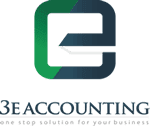Beginner’s Guide on How to Read and Understand the Balance Sheet

The financial statements are important reports produced to determine the vitals of the business. Thus, it is crucial to know how to read and understand the information given therein.
Learning to Understand the Balance Sheet
The balance sheet follows the accounting equation. Total assets must equal the sum of both liabilities and equity. To understand the balance sheet, you need to learn its every element and its relationship with other factors.
Once you master this, you can then start to assess your company’s current condition. For example, once you understand the balance sheet, you may tell that you have too many maturing debts and yet you do not have enough money to pay them. Further, from the balance sheet, you can also know how much your sales are still in credit.
You can get a lot of information from the balance sheet. Here are the features you must learn to understand the balance sheet.
Current Assets
Current assets are expected to be sold, consumed, exhausted, or used through regular business operations over the next year. They have a life span of one year or less. This means that the items are easily convertible into cash. Examples of current assets include cash, cash equivalents, accounts receivable, inventory, supplies, and other liquid assets.
Cash is the most basic example of current assets. But cash does not only mean the money you hold. It also includes cash in banks, bank drafts, checks, and petty cash. On the other hand, cash equivalents are investment securities that are readily convertible and held for three months or less. Cash equivalents include commercial papers and treasury bills.
It is vital to learn and understand how current assets work because these are what you use to fund day-to-day business activities. Thus you need to know if you have enough existing assets to function efficiently.
Non-Current Assets
Non-current assets are the company’s long-term investments. As opposed to current assets, these items are used for a long time and take time to convert back into cash. Examples of non-current assets are furniture and fixtures, building, land, intangible assets, and long-term investment securities.
Because they are used for a long time, it is hard to ascertain their real, current value. Thus, accounting rules estimate the property’s usage and wear and tear over time. For example, depreciation cost is deducted from property, plant, and equipment to estimate the items’ current value.
Liabilities
Liability is the sum of money owed to others. These items are settled over time by transferring economic benefits, like money, goods, or services. Similar to assets, liabilities are also categorized either as current or non-current.
Current liabilities are those that will mature in less than one year. Examples of current liabilities include short-term borrowings, accounts payable, and the current portion of long-term borrowings.
On the other hand, non-current liabilities are items other than current liabilities. This includes things that have maturity dates of at least one year from the reporting date. A 15-year mortgage loan is an example of a non-current liability.
Liabilities are vital to the business because they usually finance operations and pay for big projects. It is essential to understand this part of the balance sheet to know how much you owe, currently and long-term. That is, to assess whether you can pay them or not.
Owner’s Equity
The owner’s equity is primarily the capital invested in the company. Through the years, the owner’s equity changes with the addition of profit and additional expenses. Further, it is reduced by withdrawals and losses. Consequently, following the accounting equation, the owner’s equity should equal the difference between total assets and total liabilities.
For corporate businesses, their equity looks different as compared to sole proprietorships and partnerships. Their equity is called shareholders’ equity, and their capital is aggregated into ordinary shares, preferred shares, and retained earnings.
It is important to learn about the owner’s equity to see how much your company has grown. Further, the owner’s equity can gauge your capacity to expand. Thus, it is crucial to learn what your capital shows.
Financial Analysis and Consultation
The balance sheet gives out much important information about how well or bad the business is doing. Thus it is crucial to understand the balance sheet. Reading the balance sheet will help you make important decisions or strategies to improve your business.
Do you need assistance to understand your financial reports? Consult a freelance accountant in Malaysia. Having a professional go over your financials is advantageous to gain expert insights and suggestions. Contact 3E Accounting Malaysia today.








